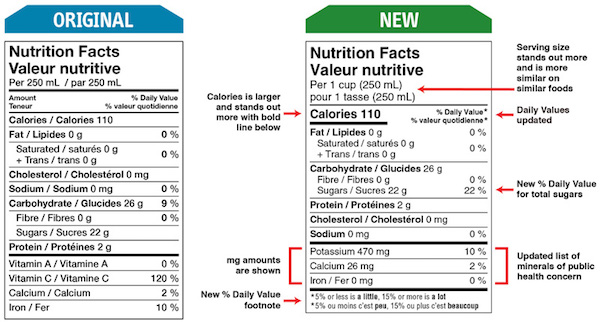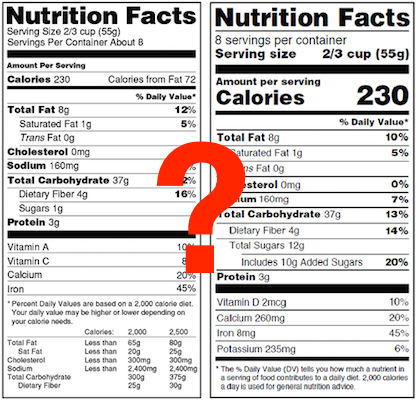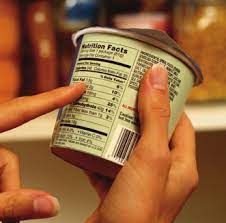Canadian Labeling Requirements
Health Canada announced new nutrition and labeling requirements that went into effect on December 14th. Here's a rundown of the key changes for our Canadian users.
We currently have the vertical and linear formats available on ReciPal. You can select them using the Label Type dropdown menu - they're the "Canadian New" option at the end of the list.
When Do I Have To Start Using the New Format?
There's plenty of time to make the transition. You have 5 years (until December 2021!) before the new Nutrition Facts Panel format is required. Until then, both the current and the new formats are compliant. You can use either one, but you have to use only one of them. That means you can't use the current format and include parts of the new one in it, like the new vitamin requirements, for example.
It seems that the amendments related to food colors, though, must be followed immediately. That's what it says in the CFIA implementation plan. (Health Canada's site seems to suggest that the 5-year transition period applies, but we'd suggest following what the enforcement agency says—that's the CFIA.)
What Are the Changes?
The changes affect the layout and content of the nutrition panel, the format of the ingredient statement, the calculation and declaration of serving sizes, the declaration and presentation of sugars, and the naming of food colors.

The old and new Canadian labels courtesy of Health Canada.
- Nutrition Facts Panel: The new formatting requires that the text be black and the background white or neutral with no more than 5% tint. Calories must be in a larger font and underlined. Vitamins A and C are no longer required, but potassium is. All % DV values are updated. Vitamins and minerals must show both mg and % DV. Sugar also must have a % DV number. A footnote statement must be included showing when % DV is a little or a lot.
- Ingredient Statement: The formatting changes require capitalizing the first letter of an ingredient name and using lower case letters for the rest of the word or phrase (including sub ingredients). Ingredient names have to be separated with commas or bullets. Sugars have to be grouped together under the name "Sugars" with the types of sugar (honey, molasses, granulated sugar, etc.) listed out in parentheses or brackets. Food colors have to be listed by name. The same rules for text and background colors apply as for the nutrition facts panel. The formatting rules also apply to any ‘contains’ statement for allergens, gluten sources, and added sulphites.
- Serving Sizes: The goal is to standardize sizes to make comparing products easier. New sizes reflect amounts typically eaten. There's a new definition for single-serving packages (anything up to 200% of the reference amount is a single serving), and there are guidelines for how to show servings in multi-serving packages depending on whether the food comes in distinct pieces or can be measured by volume.
- Sugars: The changes are covered in the updates for the Nutrition Facts Panel (show % of DV) and the ingredient list (group them together). The definition of sugars includes all sweeteners that are not sugar alcohols.
- Food color: Again, the big requirement is covered in the ingredient statement update—colors have to be declared using their specific common names rather than declaring them as "color." But the requirement for lot-by-lot certification of synthetic colors is removed.
How Can ReciPal Help?
We're working on the other new format options as well. We'll let you know as soon as updates and formats are released, so stay tuned. And let us know if you have any comments or suggestions!






